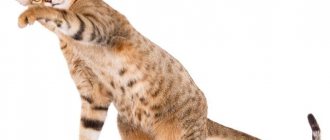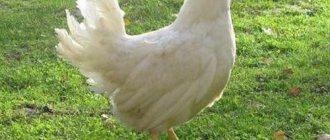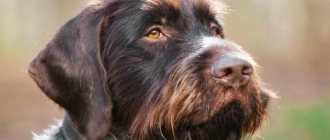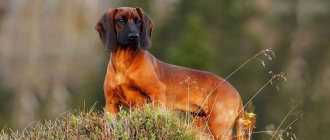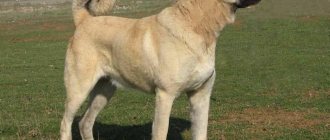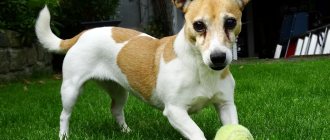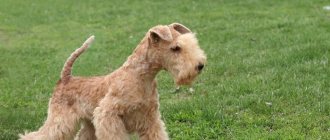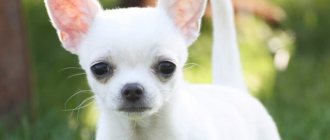The British Longhair cat or Highlander has a wide muzzle and a smile on it, reminiscent of the Cheshire cat from Alice in Wonderland. The face of a teddy bear, thick fur and a gentle character are three secrets of popularity among cat lovers. But, it is not so simple and the origins of the breed stretch back to the Roman conquerors of Britain, to old cat breeds. Once a hunter and protector of barns, the British cat is now a family favorite, preferring the comfort of the hearth and playing with a toy mouse.
History of British Longhair cats
The past of the Lowlanders cannot be called ancient, much less glorious.
The breed arose due to a recessive gene for long hair, the carriers of which, according to felinologists, should not have been allowed to reproduce. Moreover, the breeders themselves were to blame for the genetic failure; in the mid-50s they wanted to expand the color palette of British shorthairs by crossing them with Persians. At first, everything went according to plan: kittens born from mixed “marriages” inherited the luxurious colors of Persian cats and the short hair of their English parents. However, after several generations, the “increased fluffiness gene” made itself felt, and the animals began to bear long-haired offspring. Breeders were not prepared for such a surprise, so at first they strictly rejected fluffy kittens, selling them for a symbolic price, or even for free, provided that no one would breed such pets.
Soon, the longhaired variation of the British found a few fans who began to “push” the breed into the TICA and WCF breeding lists. But since the British cats were distinguished from their English ancestors only by their voluminous fur coats and nothing more, some felinological clubs in Europe and the USA continued to register them as a variety of British cats. At the same time, TICA recognizes Lowlanders, although for now in the status of a new breed.
Important: today, crossing Persians with British shorthair and longhair cats is prohibited. At the same time, matings between Lowlanders and traditional British are allowed by some clubs.
Breeding
A purebred animal is often purchased for subsequent breeding in order to make a profit from the sale of kittens. In addition, many owners believe that this is much more humane than castration and sterilization.
A female British cat reaches sexual maturity at about 8-10 months, but experts usually do not advise taking her for mating right away - the young body is not yet strong enough to bear offspring, and the consequences of haste may not be the best. Ideally, a cat ready for breeding and showing serious interest in this is taken to visit the cat. She needs to choose her partner carefully.
To get purebred kittens, you need to choose a representative of the same breed; it is also not recommended to experiment with mating animals of different colors. Despite the fact that the British are generally in good health, it is a good idea to double-check how healthy the father-to-be is.
If the female is still very young, she may not become pregnant after the first mating, but usually this is not a reason to panic - you just need to wait until the next time and repeat the procedure.
A cat's pregnancy lasts about two months, the easiest way to determine its beginning is by hormonal levels - the animal's body, having received what it wanted, relaxes and calms down. After 15-20 days, such a sign of pregnancy as swollen nipples appears, the animal shows a remarkable appetite. At this stage, fish should be completely excluded from the expectant mother’s menu, but the share of fermented milk products should increase.
During the first one and a half to two months, the cat takes care of her babies herself, and no one can do this better than her. After this period, when the kittens gradually become more independent, they need to be shown to a veterinarian so that he can prescribe a course of vaccinations and generally assess their health. In addition, purebred children now need to obtain documents confirming their origin.
British Longhair breed standard
At first glance, the longhaired variation is distinguished from its British shorthaired cousins only by its more striking “outfit.” Moreover, if you take a closer look, it becomes clear that this is a rare case when the first impression is not deceptive. Perhaps this is why TICA did not begin to draw up a separate standard for the breed, but simply slightly modified and adjusted the existing version intended for British Shorthairs.
Head
The British Longhair is a medium to large sized cat with a round, cheeky face. The animal's chin is voluminous, the bridge of the nose is flat, short, and practically without a stop. The vibrissae of representatives of the breed are clearly marked, convex, rounded in shape.
Eyes
The large, round eyes are moderately wide apart, and the color of the iris matches the color of the coat. The exception is silver-colored individuals, for whom a rich green iris tone is preferred.
Neck
The thick, muscular, short neck extends into round cheeks. In mature cats and cats, this part of the body expands in width, so it seems that there is no neck as such.
Ears
The ears of the British Longhair are small to medium in size, set on the sides of the rounded cat's skull without becoming splayed out. The base of the ear is wide, the tip is moderately rounded.
Body
The body of the British Longhair cat is powerful, wide, and smoothly rounded in outline. The chest is also massive. The back is straight, the sides look voluminous.
Limbs
The legs of representatives of the breed are of moderate length, strong and strong. The paws are thick and large. The animal itself looks squat, but not short.
Tail
Both shorthaired and longhaired Britons boast thick, medium-length tails with an elegantly rounded tip.
Color
The purebred Lowlander has the same colors as its shorthaired cousin, that is, solid, tortoiseshell, smoke, tabby, bicolor.
Wool
The coat is semi-long type. The hair is dense, elastic, not tight. It is desirable to have a richly pubescent collar area and panties. But the pronounced wooliness of the coat, as well as thin long hair with a hint of the airiness inherent in Persians, are rejected.
Disqualifying faults
Disqualifying defects mean defects in behavior and appearance that call into question the breed of the animal. These in British longhair cats include: jaw distortion, skin pigmented in tones that do not match the overall color, incorrect eye color, as well as an unreasonably aggressive reaction in response to the action of exhibition specialists. Poor physical shape, as well as severe pain, are also considered sufficient reasons to deny a pet and its owner entry into the ring.
Exterior
Muscular, strongly built cats should look like lynx cubs - compact, strong and agile. The average weight is 7 kg, some cats reach 10 kg. The standard is preliminary, changes are made as the breed develops:
The head is triangular with a convex skull, rounded cheekbones. The forehead is high, the muzzle is short and blunt, and the anus are prominent. The nose is wide along its entire length, with well-open nostrils;
The Highlander's ears are medium set and vertical. Kittens are born with a straight ear, which bends back as they mature - typical Curl ears with a less tight curl;
The eyes are almond-shaped, medium in size, set wide and slightly slanted. The color of the iris is in the yellow, orange, green spectrum;
The body is of medium length, compact. The limbs are long and strong, especially the hind legs, causing the croup to be slightly elevated. Paws are round and large, extra toes are acceptable (polydactyly);
The tail does not reach the hock joints. It can be a very short curled bob to the impression of complete absence or a straight thick tail, shortened like a lynx;
Maine Coon
Korat cat
British Chinchilla
The coat comes in two types - short, thick with a dense undercoat or elongated, forming a frill, trousers, and tassels. The hairs are thick, rough, the undercoat is not cottony. Tabby colors - stripes, spots, marbles in any color.
Personality of the British Longhair cat
The longhaired British cat is the embodiment of delicacy and peacefulness itself. Actually, for these character traits alone, representatives of the breed can be recommended to owners who want to have a problem-free pet next to them, to whose whims they do not have to adapt. Lowlanders are extremely moderate in their preferences and do not cross the line beyond which misunderstandings and friction with the owner begin. For example, furry intellectuals adore human company, but in his absence they do not fall into depression, preferring to quietly philosophize on their favorite couch or armchair. By the way, breeders who have many years of experience in breeding the breed claim that the character of their charges is more docile and good-natured than that of short-haired British cats.
Kittens also experience attacks of mild melancholy, during which they are reluctant to contact the owner and members of his family. During such periods, it is better not to pester your pet, giving him the opportunity to take a slight break from communication - don’t worry, this withdrawal will not last long. Morning oratorios while waiting for breakfast are also not about the British. From time to time, English “gentlemen” are able to remind themselves with a quiet, slightly rolling “meow”, but they certainly will not scream to attract attention or in confusion of feelings.
But the long-haired Briton will not refuse to play, and this comrade perceives with equal delight both entertainment in the company of a person and the independent “torment” of a wind-up mouse or ball. As they grow up, British Longhairs become more phlegmatic and slow down in terms of physical activity, so anyone who is scared of hurricane cats, dashingly diving from the closet to the sofa and overturning flower pots of any weight, can get such a pet.
Purrs treat children patiently and condescendingly, provided that the latter do not annoy the animal too much with their attention. When bringing a British Longhair cat into your home, inform your children that the breed does not like strong hugs, nor does it like a noisy, nervous environment. We are ready to tolerate lowlanders and the presence of dogs. True, in order for the relationship between the dog and the representative of the purring brethren to become extremely peaceful, it is better that acquaintance and getting used to each other take place at a young age.
Education and training
The British are not the most energetic breed, so it is not advisable to practice circus acts with them in the “we are from the Kuklachev Theater” style. But it is necessary to correct the cat’s behavior by instilling in him the norms of household etiquette. Moreover, after a year, lowlanders lose their thirst for knowledge and stubbornly refuse to re-educate.
At first, special literature will help out - the books “Raising Kittens” by E. Filippova, “Bad Habits of Cats. Parenting without stress” by A. Krasichkova and others. If the kitten came from a breeder who did not bother to instill in him toilet skills, get ready to take on this work yourself. Fortunately, British Longhairs are naturally clean and quickly realize that it is much more pleasant to do “wet things” in a pile of dry litter than on a slippery floor.
Be sure to take into account the subtle mental organization of the breed - British breeds tend to keep silent and absorb grievances, which negatively affects their psyche. So if at first the cat makes mistakes and goes to the toilet in the wrong place, it is better to close your eyes to the odorous “pools” and try alternative methods of litter training - put a cloth in the box that smells of cat urine, or rustle the litter in the presence of the kitten. And, please, no grandma’s methods that involve poking the baby’s nose into a puddle - no matter what home-grown experts in cat psychology say, such educational moments do nothing but harm. Remember, the kitten is not able to endure for long and often forgets which room its toilet is in, so at first it is recommended to place a couple of trays in the house to avoid “wet incidents”.
British longhair cats are greedy for positive incentives, so for any achievement, praise your ward from the bottom of your heart. True, here it is important to distinguish between actual achievements and norms of behavior. If for once the cat ignored the sofa and did not sharpen its claws on its back, this is not a reason to rush for a tasty reward for it.
It is better to keep punishments to a minimum, but if the purr begins to become impudent and encroach on the forbidden, the prankster will have to be put down. The best method of influence is considered to be intonation highlighting. If you categorically and firmly say “No!” the cat sitting on the table, at the same time tapping his palm on the tabletop, he will understand this. Don’t even consider spanking your pet with newspapers, your hand, or a slipper that has turned up - you can’t hit any cat, let alone an intelligent and impressionable British Longhair.
Maintenance and care
Toys, a sisal scratching post, a bed, bowls for food and drink - property that any cat owner should have. It is important to promptly change the litter in the toilet of a British longhair cat. Representatives of this family are demanding cleanliness and will never go into a tray with the products of their own vital activity. If desired, you can buy a gaming set for your pet, and it doesn’t have to be a high one - the breed does not suffer from a mania for conquering peaks. At least once a day, it is advisable to take your cat outside to get some fresh air, or set up a corner on a net-covered balcony where she can replenish her stock of impressions.
Hygiene
The elastic, lagging hair of the British Longhair differs from the hair of Persian cats, so it does not tangle as easily and does not become tangled. However, you will have to brush your pet at least once a week. Individuals who permanently live in the house shed not seasonally, but throughout the year, so if you notice that your cat’s fur is shedding more intensely than usual, it is better to increase the frequency of brushing.
The eyes of British Longhairs are sensitive and may leak, which is especially noticeable in kittens. There is no need to make a tragedy out of this phenomenon, just remove the mucous lumps with a clean cotton swab dipped in phytolotion, not forgetting to monitor the intensity of the discharge. If your eyes are leaking too much, this is not a reason to grab strong anti-inflammatory drops without consulting a specialist, since there is a risk of worsening the situation.
Lowlanders' claws, like their short-haired relatives, grow unevenly. Breeders recommend shortening the claws on the front paws once every 2-3 weeks, and on the hind paws no more than once a month. It is necessary to clean your ears as they become dirty, without falling into perfectionism. That is, if a cat has secreted a large amount of secretion, it is removed with a cotton pad soaked in hygiene lotion or hydrogen peroxide. If there is little sulfur, it is better to close your eyes to its presence, since the more often the ear is cleaned, the more intensely the excretory glands work.
If your pet does not eat dry food, which acts as an abrasive for teeth, be prepared to systematically clean its oral cavity with a zoopaste and a brush. The British Longhairs themselves do not respect such actions, so it is often necessary to involve a second person for processing, and sometimes to “swaddle” the animal so that it does not interfere with the process of neutralizing food plaque.
An alternative to classic brushing is a liquid toothbrush. This is the name for special solutions added to drinking water and performing the function of a disinfectant and plaque dissolving agent. In particularly advanced cases, when your pet has acquired tartar, you will have to contact a veterinarian. But since in zoos such procedures are often carried out under anesthesia, it is better not to neglect regular home cleaning.
Feeding
There are no strict instructions requiring that a British Longhair cat be fed only dry or natural food, so each breeder chooses his own ideal option. The main advantage of industrial feeds over natural products is their balance and availability. A purr “sitting” on dry food does not need additional vitamins, however, provided that it is food of at least super-premium class.
The natural menu of longhaired British cats traditionally includes:
- turkey, lamb, beef and chicken meat, heat-treated or frozen;
- boiled offal;
- fermented milk products and milk (only for kittens);
- quail eggs.
It is better to give fish less often and in the form of boiled fillets, since some types contain substances harmful to the cat’s body. Cereals (buckwheat, rice) are mixed with meat in limited quantities. Do the same with boiled and raw vegetables - pumpkin, carrots, zucchini. Quail eggs can be replaced with chicken yolk. You can also cook an omelet with it.
For up to six months, milk is present in the diet of British Longhair kittens, but then its consumption should stop - the body of an adult animal does not produce enzymes that break down milk protein. Be sure to grow it on the windowsill or buy young grass for the cat - with its help the animal gets rid of hairballs that got into the stomach when licking the body.
It is useful to periodically feed cats on a natural diet with vitamins and complexes with taurine, but it is better if they are prescribed by a veterinarian after an examination. Some breeders introduce homemade dietary supplements into the diet, such as rosehip and nettle infusions, although they are not always able to cover the pet’s need for microelements and vitamins. Three-month-old British cats are fed up to four times a day; six-month-old individuals are transferred to a two- or three-time diet.
Origin
The ancestor of this breed is considered to be the “mountain lynx”.
The cat breed was bred in 2004. English breeders made a unanimous decision to introduce to the world a new breed, similar in appearance to a wild lynx. The “mountain lynx” was taken as the basis. It does not belong to wild cats, and does not contain wild genes in its own genus. The crossing was pure, without the use of hybrids. To breed cats with the desired appearance, breeders selected pets with the required coat color. The experiment was a success and the result was a small domestic lynx, but completely harmless, gentle and friendly. The new breed is nicknamed Highland Lynx, which translates to “mountain lynx.” Received official recognition in 2005.
Behavior and character
The Highlander cat is a wonderful choice of pet. They have a friendly and calm disposition. In the presence of strangers, the pet does not hide, but enjoys contacting them. Cats do not prefer to make sounds; they tend to show their own opinions through gestures and touches. They get along easily with kids and other pets. Due to its calm nature, conflicts are excluded. But you need to carefully consider the situation, if there are rodents and birds in the house, the instincts are not canceled. To eliminate the possibility of tragedy, owners need to closely monitor their pets when they are in the same room.
Health and illness
Tartar is one of the few pathologies to which these pets are susceptible.
Highlander cats are a strong and resilient breed, but are prone to certain diseases. Heart disease can be inherited genetically. Like other breeds with a short muzzle, the animals are predisposed to the formation of tartar. It is necessary to systematically examine the cat’s oral cavity and monitor the cleanliness of the teeth. Representatives of the breed also have problems with obesity and suffer from allergic reactions. It is necessary to vaccinate cats according to the vaccination schedule.
Nutritional Features
The cat breed is large in size and does not complain about its appetite. In nutrition, it is necessary to adhere to generally accepted standards, and not give students the opportunity to overeat. Excess food threatens obesity, and as a result, leads to many problems with well-being. When selecting dry food, preference should be given to premium products, in addition. It is possible to dilute the diet with pates and canned food of similar labeling. With a natural diet, you need to give cats a complex of vitamins. The basis should be meat and meat by-products - rabbit, chicken, beef, pork, chicken liver, heart, ventricles. It is recommended to boil the products before use; if served raw, you must first scald them with boiling water. In addition to food, animals need fresh drinking water.
Health and disease of British Longhair cats
Longhaired British cats live up to 18-20 years. They have few health problems, but given the developing status of the breed, it is logical to assume that some of the ailments may manifest themselves over time. In the meantime, diseases such as hypertrophic cardiomyopathy and polycystic kidney disease cause discomfort to cats. As for obesity, to which diligently fed individuals are prone, it is easier to combat it in the early stages. Neglected fat cats manage to accumulate a sufficient number of serious ailments, including arthritis, diabetes and hepatic lipidosis.
Is it possible to identify a Briton by his behavior?
The character of a British cat is also a serious marker of the species in question. It begins to manifest itself in childhood, and over time acquires all the required features:
- autonomy and independence;
- desire to be alone;
- habit of sleeping a lot;
- tolerates long absence of the owner from the house without any problems.
All basic character parameters can be adjusted only in childhood, but you should not expect that the British dog will become sociable, affectionate and strive for constant communication with the owner.
In the early period, ground rules for living together are laid down and red lines for unacceptable behavior are drawn. If everything is left to chance, the kitten will eventually turn into an aggressive cat that will bite, scratch and make its own rules in the house.
How to choose a kitten
- As the breed continues to gain popularity, buyers will encounter unscrupulous sellers selling problem animals. In order to purchase a kitten, it is better to go to breed exhibitions where professionals gather.
- Fans of more playful pets are advised to opt for a male kitten. Long-haired “British girls” are calmer and more phlegmatic than males.
- Look for a nursery registered in the WCF felinological system - such institutions value their reputation and do not breed animals without pedigrees. In addition, the websites of most of them contain photos and documents of the producers, from which you can get a relative idea of the appearance of future litters.
- British Longhair kittens are sold starting from the age of three months. If the breeder offers to give the baby away earlier, there is a catch.
- In three-month-old kittens, the exterior potential is practically not visible, so for exhibitions it is better to take older individuals (4-6 months), whose iris color has been determined and the first moult has passed.
- Assess the living conditions of the cat and its offspring. The nursery should be clean and warm, and the animals should look healthy and well-groomed.
- Browse advertisements for the sale of child support children. They are given by cat owners who receive a kitten as payment for mating their ward with a cat from the nursery. Buying such kittens is quite acceptable, especially since the maintenance animal is given away first, and is usually the cutest kitten in the litter. The main thing is to check the purity of the parents’ pedigrees.
Habits
A cat's habits are also a manifestation of their character. Of course, everyone knows perfectly well: when a cat hisses, it means that it is defending itself and is scared. But there are also less obvious manifestations of character and temperament.
You should also know about them in order to better understand your pet.
- Flatten ears. This indicates fear. Along with this, other features may also appear: the back is arched, the fur is raised, the cat hisses and bares its fangs. In this state, you must try to calm your pet down. First of all, eliminate the source of the fear.
- Tail wagging. Since childhood, we know that if a cat wags its tail, it means that it is unhappy or angry. But it is not always the case. There are three main ways of wobbling. In the first case, only the tip moves. This means interest and curiosity. The object of her interest may be an unusual sound, a flying bird, or a new object. Animals behave in a similar way when hunting.
- Meow. This is the most important channel of communication between pet and owner. Depending on the volume, tone and duration of sounds, you can judge the cat's mood and needs.
In the second case, the tail is raised, but remains straight. The pet moves it from side to side. This is a more alarming sign. This is a clear expression of dissatisfaction and irritation. If a cat behaves this way, it is best not to try to pick it up or pet it.
The extreme degree of irritation and fear is expressed in a vertically raised tail. At the same time, the fur on it stands on end. This is exactly the picture that can be seen when a fight is brewing between two individuals.
With the help of meowing, she can beg for food. Some do this very loudly and persistently, others only squeak pitifully, looking at the owner. But if the animal meows quietly but constantly, you should be more attentive to it. Perhaps this is how it speaks of the pain tormenting him.
Cats are very interesting and original animals. Each of them is unique.
For more information about cat behavior, watch the following video.
